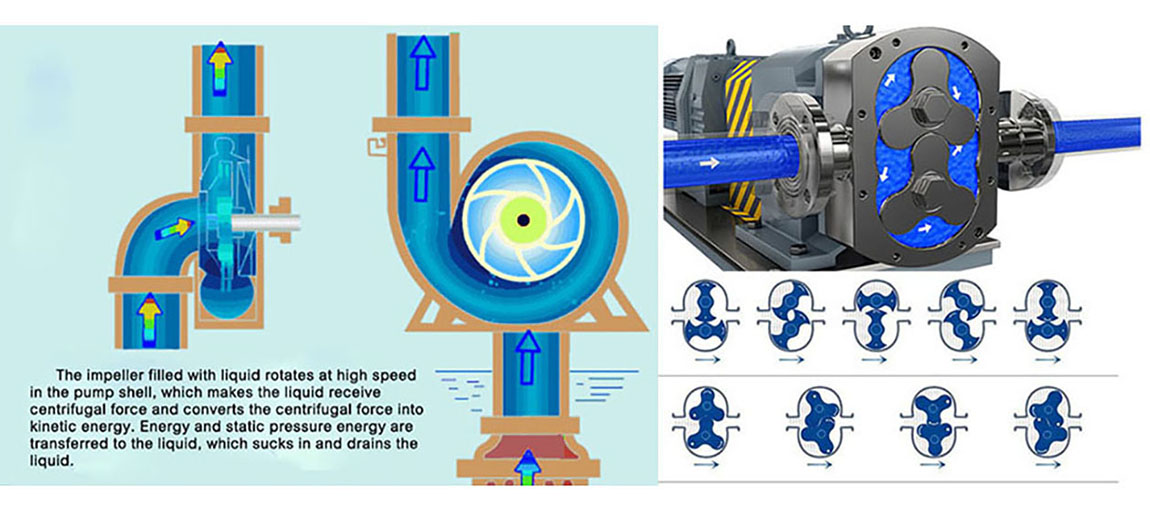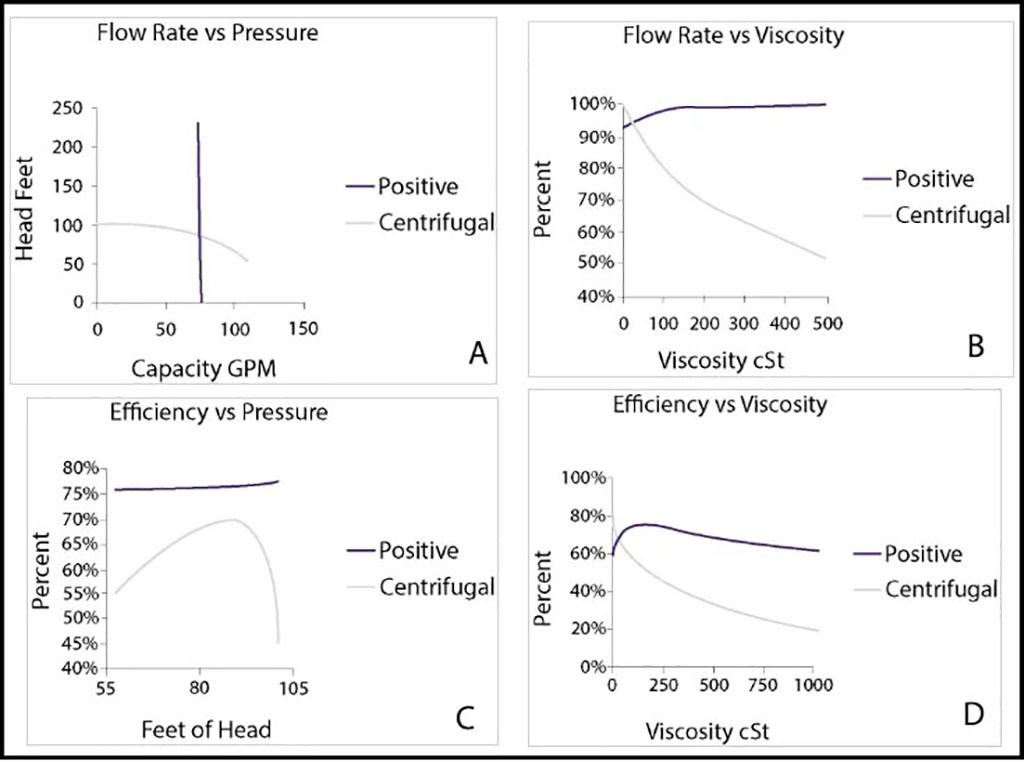Positive displacement rotary lobe pumps and centrifugal pumps are the two main types used to transfer liquids. However, they have some distinct differences. They shows different talents when transfer liquids.The users should select with careful consideration. The following are the main differences between Positive displacement rotary lobe pumps and centrifugal pumps.
1. The difference in working principle
A Centrifugal Pump transfers the kinetic energy of the motor to the liquid through the rotating impeller. This increases the velocity and pressure at the discharge. The discharge velocity remains constant when motor rpm is constant. On the other hand, Positive displacement rotary lobe pumps suck a fixed volume of fluid in its cavity and force it to discharge into the pump outlet. So, it is a constant volume pump. Centrifugal pumps are high capacity and relatively low-head pumps whereas positive displacement pumps are low capacity high-head pumps.

2. The Difference in fluid handling
A. The rotation speed of rotary lobe pump is directly proportional to the flow rate. For example, when their rotation speed is 100 rpm, the flow rate is 1 cubic, while when the rotation speed is 1000 rpm, it can be understood as 10 cubic, but there is a little efficiency loss, and the flow rate is about 9.5-9.8 cubic meters.
B. The centrifugal pump throws the medium out of the flow channel of the impeller by the high-speed rotation of the motor.
C. The viscosity of medium transferred by the rotary lobe pump is relatively large, such as heavy oil, viscous adhesives, food paste, etc.; The centrifugal pump can only deliver the medium with lower viscosity, and its delivery viscosity can only be lower than 3Cst.
3. The Difference in Performance
When you look at its performance table (Figure 1), centrifugal pumps and rotary lobe pump are quite different.
|
Centrifugal Pump |
Positive Displacement Rotary Lobe Pump |
|
A. Flow rate decreases with increasing viscosity |
A. Flow rate insensitive to changing pressure |
|
B. Flow varies with changing pressure |
B. Flow insensitive to changing pressure |
|
C. Efficiency decreases at both higher and lower pressures |
C. Efficiency insensitive to changing pressure |
|
D. Efficiency decreases with increasing viscosity |
D. Efficiency increases with increasing viscosity |

Fig. 1: Centrifugal Pump vs Rotary Lobe Pump Performance
4. The Difference in Inlet Conditions
These two types of pumps also have quite different requirements for inlet conditions. If you encounter periods where the pump remains "dry", a rotary lobe pump will prime on its own without liquid. On the other hand, a centrifugal pump is unable to create a pressure differential by priming without liquid already in the pump.
Centrifugal vs Positive Displacement Pump: Which one to Select?
A Positive Displacement Rotary Lobe pump will be a preferred selection in the following situations:
A. For high viscous applications.
B. For variable pressure conditions.
C. For changing viscosity conditions.
D. For high-pressure applications.
E. For shear sensitive liquids.
However, these are only a few criteria. Site experience accumulation is also required for selecting the right pump. Bonve is the leading manufacturer in rotary lobe pumps since 2001. When you choose a Bonve pump, you not only get the high quality pumps, but you also get the advantage of Bonve's engineering expertise and years of application knowledge in the food, chemical, pharmaceutical and cosmetics industries.
To find out more about Bonve rotary lobe pump, Click on the picture below










